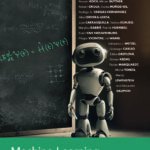
In a significant breakthrough in auditory technology, researchers at Seoul National University College of Engineering have developed an innovative system that allows for the detection and recognition of human positions using a single microphone. This pioneering work, led by Professor Sung-Hoon Ahn and his team in the Department of Mechanical Engineering, paves the way for new sound-based interactions between humans and robots, especially in challenging industrial environments where noise often hinders clarity. Their findings were recently published in the international journal “Robotics and Computer-Integrated Manufacturing”.
Sound has long been recognized as a crucial source of information, particularly in environments where visual modalities or electromagnetic-based communication can fail due to various obstacles such as dust, smoke, or extreme temperatures. However, traditional acoustic sensing technologies have often been hampered by accuracy issues or necessitate complex and expensive configurations that hinder practical industrial applications. As a result, the potential of sound as a sensing resource remains largely untapped. This innovation seeks to change that paradigm by leveraging advanced auditory technologies that can effectively operate in high-noise scenarios.
The research team’s new system, dubbed the “3D Acoustic Ranging” or 3DAR, utilizes a meta-structure design that integrates an acoustic perception capability to pinpoint the three-dimensional positions of human beings or objects, even amidst overwhelming background noise. The core functionality of the 3DAR system lies in its ability to enable distinct communication pathways through sound waves, allowing both humans and robots to interact effectively in environments that are otherwise prohibitively challenging.
.adsslot_N8exTv03zw{ width:728px !important; height:90px !important; }
@media (max-width:1199px) { .adsslot_N8exTv03zw{ width:468px !important; height:60px !important; } }
@media (max-width:767px) { .adsslot_N8exTv03zw{ width:320px !important; height:50px !important; } }
ADVERTISEMENT
In developing this technology, the researchers drew inspiration from the auditory mechanisms found in bats and dolphins, renowned for their remarkable ability to navigate and communicate through sound. Professor Ahn’s team particularly focused on engineering the capacity to selectively listen to sounds originating from specific directions, which is vital for isolating desired audio signals in noisy settings. They achieved this by creating a phase cancellation mechanism that artificially modifies the phases of incoming sound waves, meaning specific sounds can be amplified while others are suppressed. This innovation allows the 3DAR system to accomplish functionalities that previously relied on multiple sensors using just one integrated device.
To further enhance the utility of the sensor, the research group designed a dual acoustic channel that separates audible and inaudible frequencies. This design not only facilitates communication between humans and robots using sounds that are within human hearing ranges but also allows for robots to converse with one another using sound frequencies that remain inaudible to human ears. Such a dual-channel design minimizes possible interference between channels, ensuring smooth and efficient communication in various industrial scenarios.
The integration of these innovative technologies culminated in a versatile 3D auditory sensor system that has been successfully implemented on actual robotic platforms. Extensive field tests have demonstrated the system’s capabilities, showcasing a quadruped robot that was able to engage with human operators through auditory signals, successfully identifying locations of gas leaks using sound. Such practical applications extend the boundaries of how sound can be effectively harnessed in various settings, including factories and emergency response scenarios.
This groundbreaking auditory technology holds great promise across a range of applications, particularly for tracking the locations of workers and enhancing human-robot collaborations in industrial settings. The compact and low-cost nature of the 3DAR system facilitates its deployment in environments where traditional sensor systems would be impractical or too expensive. As industries increasingly migrate towards automation, this auditory technology stands to deliver significant benefits in operational efficiencies and worker safety.
In cell-based autonomous manufacturing setups, the implications of this technology are vast. The real-time tracking of worker locations can mitigate risks of collisions with robots, while the ability to communicate through sound alone enhances worker convenience and freedom of movement. Additionally, the ability of robots to communicate with each other via sound without reliance on typical network systems allows for a fluid and organic coordination among multiple robotic entities, setting a new standard for collaborative industrial operations.
The envisioned applications for this technology are not limited to manufacturing. The system is expected to be invaluable for 24-hour unmanned monitoring processes, where it can autonomously detect sounds indicative of potential hazards such as machinery malfunctions or worker accidents. Its adaptability and cost-effectiveness mean that it has the potential to be widely adopted across diverse industries that are moving towards greater automation.
Looking to the future, the research team is revolutionizing the landscape of acoustic sensing technology. As emphasized by Professor Ahn, sound waves offer unique advantages over traditional electromagnetic communication methods in that they can penetrate obstacles, making them an ideal medium for innovative interaction methods. The development of the 3DAR system represents not just an advancement in technology but a shift in how robotic systems can engage with their environments and human colleagues.
The research team plans to continue refining the capabilities of the 3DAR system to create even more advanced robotic auditory systems that may eventually integrate into larger cognitive systems, enabling robots to interpret and react to sounds in a manner reminiscent of human behavior. This vision could involve robotic systems capable of understanding commands and nuances in human speech, enhancing collaboration in countless scenarios ranging from factory floors to disaster recovery operations.
As the implications of this technology unfold, the world can expect to see sound becoming an indispensable tool in facilitating interactions across complex industrial landscapes. The innovative work emerging from Seoul National University showcases not only the scientific ingenuity but also the boundless possibilities that arise when humanity’s natural capabilities are mirrored in engineering advancements.
The development of 3DAR technology signifies an essential step forward in bridging the communication gap between humans and machines, marking a new era where sound serves as an effective channel for interaction and collaboration. The future of human-robot interaction is bright, and as this research progresses, it will undoubtedly create new pathways and opportunities for seamless collaboration within various spheres of life.
Subject of Research:
Innovative auditory technology for human position recognition with a single microphone.
Article Title:
Human-robot and robot-robot sound interaction using a 3-Dimensional Acoustic Ranging (3DAR) in audible and inaudible frequency.
News Publication Date:
27-Jan-2025.
Web References:
http://dx.doi.org/10.1016/j.rcim.2025.102970
References:
Robotics and Computer-Integrated Manufacturing.
Image Credits:
© Robotics and Computer-Integrated Manufacturing, originally published in Robotics and Computer-Integrated Manufacturing.
Keywords
Acoustic technology, human-robot interaction, 3D auditory sensor, sound localization, industrial applications, meta-structure, dual-frequency communication, automation, real-time tracking, collaborative robotics.
Tags: 3D microphone technologyacoustic sensing innovationsauditory technology advancementsbreakthrough innovations in engineeringhigh-noise environment solutionsindustrial noise challengesmeta-structure design in acousticsRobotics and Computer-Integrated Manufacturing publicationSeoul National University researchsingle-sensor position estimationsound as a sensing resourcesound-based human-robot interaction


